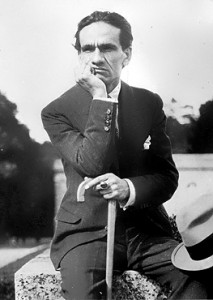 Born in Peru in 1892, Cesar Vallejo was a poet and journalist who was from a small village in the Andes and is noted for his wide range of works including plays and novels. During his lifetime he only ever published 3 original works of poetry but they have each in their turn been considered as masterpieces of the art.
Born in Peru in 1892, Cesar Vallejo was a poet and journalist who was from a small village in the Andes and is noted for his wide range of works including plays and novels. During his lifetime he only ever published 3 original works of poetry but they have each in their turn been considered as masterpieces of the art.
Vallejo was at the heart of innovation in poetry and was an inspiration for many future poets throughout the 20th Century. From a poor family, in his teens he went to the university at Trujillo but could not afford to keep up with his studies. Instead, he found himself working on a plantation and there began his concern for the plight of others working on the land who were being exploited. Having earned some money he went back to his studies and graduated with a BA in literature in 1915.
Vallejo then moved to San Marcos where he published is first collection of poetry in 1919. Los Heraldos Negros (The Black Heralds) reflected his bemusement about the harsh lives that people led in both Trujillo and Lima. He had felt a certain amount of alienation whilst living in those areas and questioned the religion he was brought up in, turning towards ideas such as Marx and Darwin’s theory of evolution.

Life following publication of his first work didn’t go well for Vallejo. He lost his job at the university, where he was working, because he refused to marry a woman he had had an affair with. His mother also passed away at this time and he was sent to prison for a period for supposedly causing an insurrection in his home town.
In 1922, Vallejo published his second collection Trilce which reputedly had been written while he was incarcerated. It is a more passionate work than Los Heraldos Negros and is often considered at the forefront of avant-garde poetry today. The poems have been hailed for their aggressive syntax with innovative uses of alliteration and raw language that moved away from the standard Spanish poetry of the time.
When Vallejo was again threatened with being imprisoned, he moved to Europe. He struggled without money and spent most of his time in severe poverty, although at one point he was given a grant from Spain to continue writing. In 1934, he married Georgette Philippart against the wishes of her family and she would become something of a figure of controversy where the various publications of Vallejo’s works were concerned, particularly after his death.
He became deeply concerned about the outbreak of the Spanish Civil War and it sparked a period of creativity that saw the publication of his final works of poetry. There is some academic debate about the titles of the works and whether Georgette, his wife, had a hand in them. Spain, Take This Chalice from Me took the war as an opportunity to explore the concepts of good and evil and Human Poems looked at social issues and included some works that Vallejo had published earlier.

In 1938, at the age of 46, Vallejo died of what is thought to be malaria and was buried in the Paris Cemetery.

